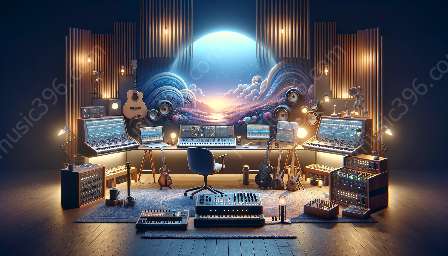MIDI (Musical Instrument Digital Interface) has revolutionized live performances by enabling innovative ways of audience interaction. From controlling lighting and visuals to allowing real-time collaboration between artists, MIDI opens up a world of possibilities for engaging and captivating live shows.
The Role of MIDI in Live Performances
MIDI technology has significantly impacted the way live performances are delivered. It allows musicians to control various electronic instruments and devices, facilitating seamless integration between different components of a live show. MIDI enables musicians to trigger and manipulate sounds, control lighting effects, and synchronize visuals, creating a dynamic and immersive experience for the audience.
One of the most innovative aspects of MIDI in live performances is its ability to facilitate audience interaction. Through MIDI-enabled controllers, performers can engage with the audience in real-time, creating a more personalized and immersive experience. Whether it's triggering effects based on audience reactions or allowing the audience to actively participate in the creation of music, MIDI offers a new dimension of interaction that enhances the overall live performance.
Real-Time Collaboration and Creativity
MIDI not only enables interaction with the audience but also fosters real-time collaboration between artists on stage. By using MIDI controllers and devices, musicians can exchange musical ideas and seamlessly integrate their performances, blurring the lines between individual acts and creating a cohesive and innovative live show. This real-time collaboration adds an element of unpredictability and excitement to the performance, as artists can respond to each other and the audience in the moment, making each show a unique experience.
Impact on the Use of MIDI
The innovative ways MIDI enables audience interaction have a profound impact on the use of MIDI in live performances. Musicians and performers are continually exploring new ways to incorporate MIDI technology into their shows, pushing the boundaries of what is possible in terms of audience engagement and interaction. The demand for MIDI-compatible instruments and devices continues to grow as artists seek to create captivating and immersive live experiences.
Furthermore, the evolution of MIDI-enabled software and hardware has paved the way for more advanced and seamless integration of MIDI technology in live performances. From MIDI controllers that respond to audience input to software that allows for real-time manipulation of visuals and effects, the use of MIDI in live performances is constantly evolving and expanding, driven by the desire to create innovative and interactive experiences for audiences.


